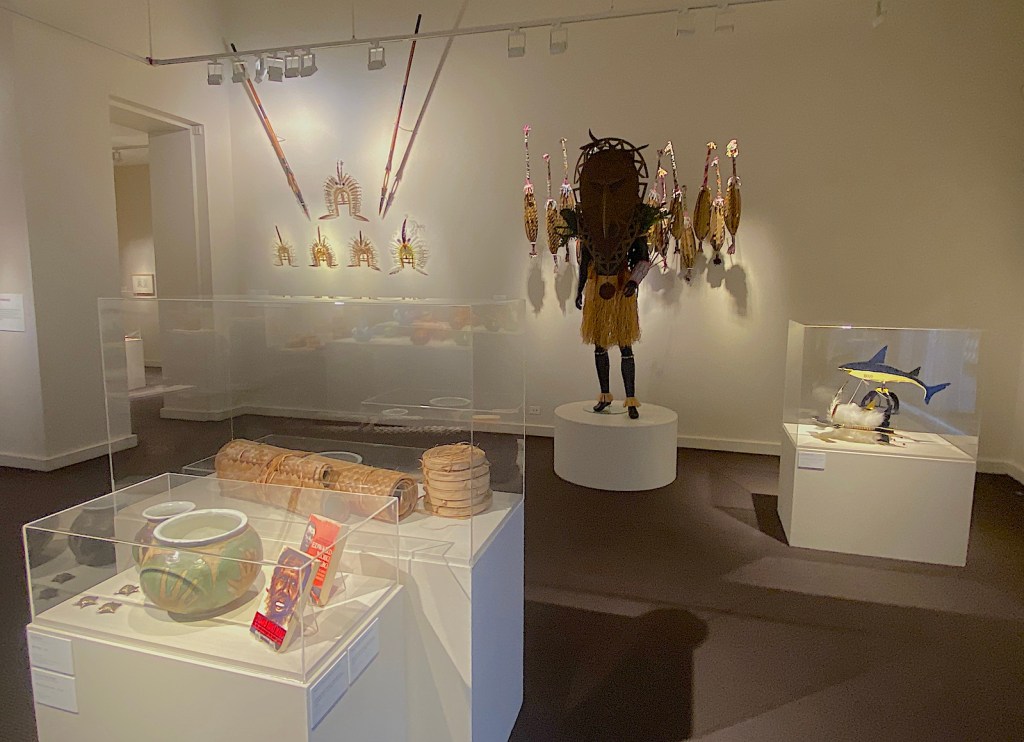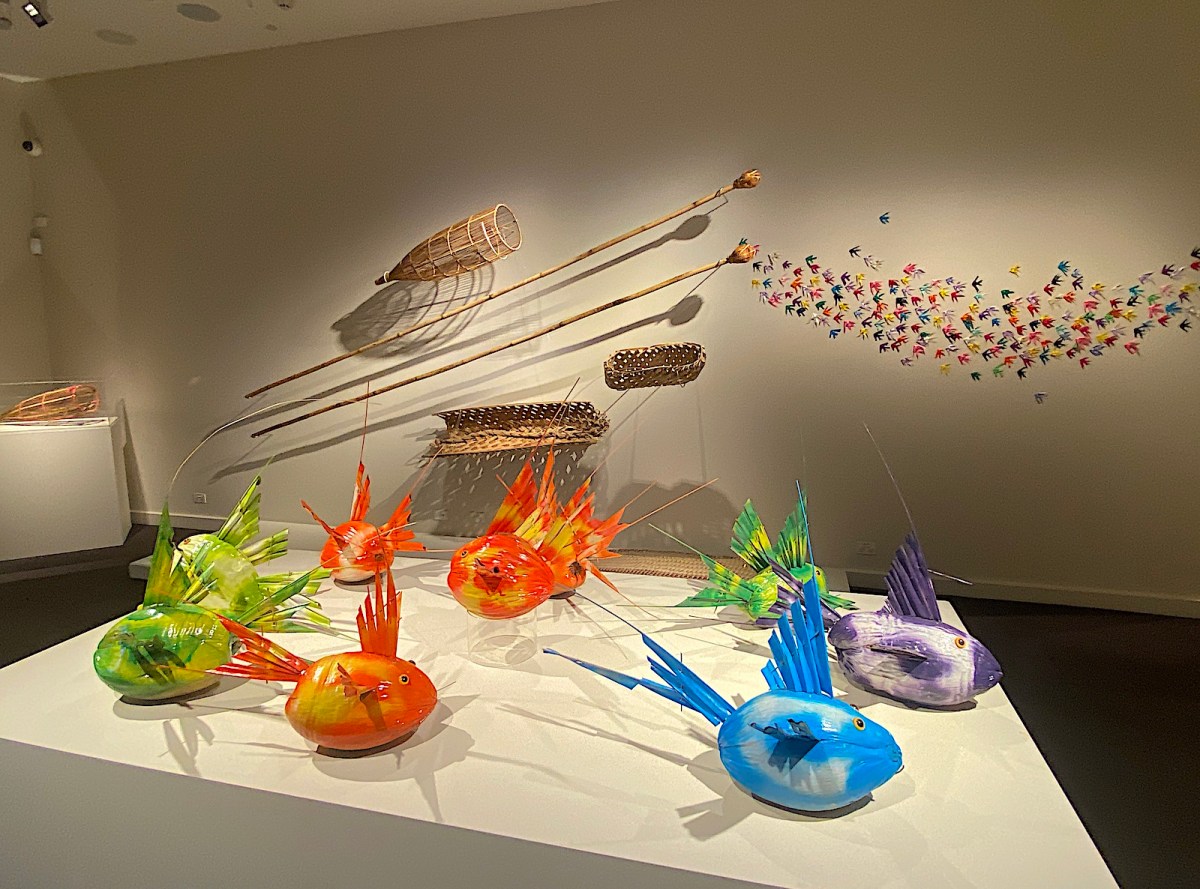Aboriginal and Torres Strait Islander readers are advised that the following article names people who are deceased.
When we think of the art from the Torres Strait Islands, it is usually a generic picture of highly graphic black and white prints, and perhaps some headdresses or baskets using organic materials. A new exhibition at the Perc Tucker Regional Gallery – which has been curated by the indomitable Gail Mabo – shakes up those outdated perceptions.
Eastern Threads looks at creative and cultural practice from Eastern Torres Strait, and a chain of islands east of Mer Island, and is surprising in its diversity. Yes, the exhibition does include those iconic prints and headdresses, but it also turns to women’s weavings, adaptive practices that respond to remote making today, lineages and learnings, as well as stretching back to illustrations and ephemera that ensure heritage and culture is not lost.
Located in Townsville – which has the second largest First Nations population after Darwin – the Gallery reaches out to a community that also has a large military base and tourism economy. In doing so, Mabo has sensitively curated an exhibition that easily navigates that broad viewing audience, allowing visitors to walk away with new understanding and appreciation.
The exhibition is loosely divided into four areas. Front and centre to the exhibition is a museum case with objects by activist and Elder Eddie Mabo (Gail’s father), who is known for his role in campaigning for Indigenous land rights. Among these objects are bowls he made as a student at James Cook University, and books used as testament of a living culture against the concept of terra Nullius in the Supreme Court of Australia.
Also in the vitrine are a few bronze stars made by Gail Mabo, which she explains comes from her father putting sand into her hand, to feel that connection to Country. These sit alongside objects that she has collected – everyday objects that continue the idea of a living culture, where artefacts, artworks and utilitarian handmade objects rub shoulders with each other.
Taking in the whole exhibition at a glance, it is rich in materiality. A corner of the main space is devoted to men’s objects and artworks, and speaks to the strength of male traditions in Torres Strait Islands culture.

Dominating the space is the banana leaf wrapped Alag mask (1998) by the celebrated Ken Thaiday Snr. Around this is a collection of Baur (spears) and Dhari (dance headdresses) largely from the 1990s, several of which are hung high (so they are beyond the touch of women).
Balancing that narrative in a small side gallery is a collection of women’s works. Mabo has made a point of celebrating their voices and creative traditions, which are sometimes overlooked, in this museum context. From using every aspect of the coconut tree, to the contemporary application of plastic strapping used in shipping to create baskets, and prints (which women also started making in the 1980s) – the everyday is valued democratically alongside fine artworks.

The prints (by both men and women) across the exhibition are incredible and demand a closer look – their intricate patterning individual to each artist.
The final component of the exhibition, again in a side gallery, are beautiful, sensitive drawings by Lindsay Wilson. While these may represent a “Western” style of documentation, they are paired with a vitrine of objects that point to oral histories – both revering the passing of knowledge and keeping that knowledge alive.
Wilson had gifted these drawings to James Cook University, but when it closed, they found their way to the Gallery. The 80 artworks in the show are drawn from the Townsville City Art Collection, many of which were collected in the 1980s, or earlier. Eastern Threads offers renewed engagement with that commitment to collect and share the narrative of this local community.
Read: Exhibition review: Ten Thousand Suns, 24th Biennale of Sydney
As an accomplished dancer, choreographer and artist in her own right, this is Mabo’s first exhibition as curator. In a video within the exhibition, she describes her process: ‘I treat this as my lounge room … there’s a familiarity, because I grew up with seeing these things.’
That feeling is passed on to the viewer – we do not feel ostracised or voyeuristic. This exhibition gets a balance right, where tourists, locals and pride by First Nations community, can all find points of connection. Mabo does a stellar job in inviting all to find value.
Eastern Threads
Curated by Gail Mabo
Perc Tucker Regional Gallery
2 February – 14 April
Free.
Artists: Ais Bero, Jenny Mye, Lucy Thaiday, Ken Thaiday, Alice Hunai, Andrew Passi, George Sambo, Aicey Zaro and Tommy Pau.
The writer travelled to Townsville as a guest of Perc Tucker Regional Gallery and the City of Townsville.





